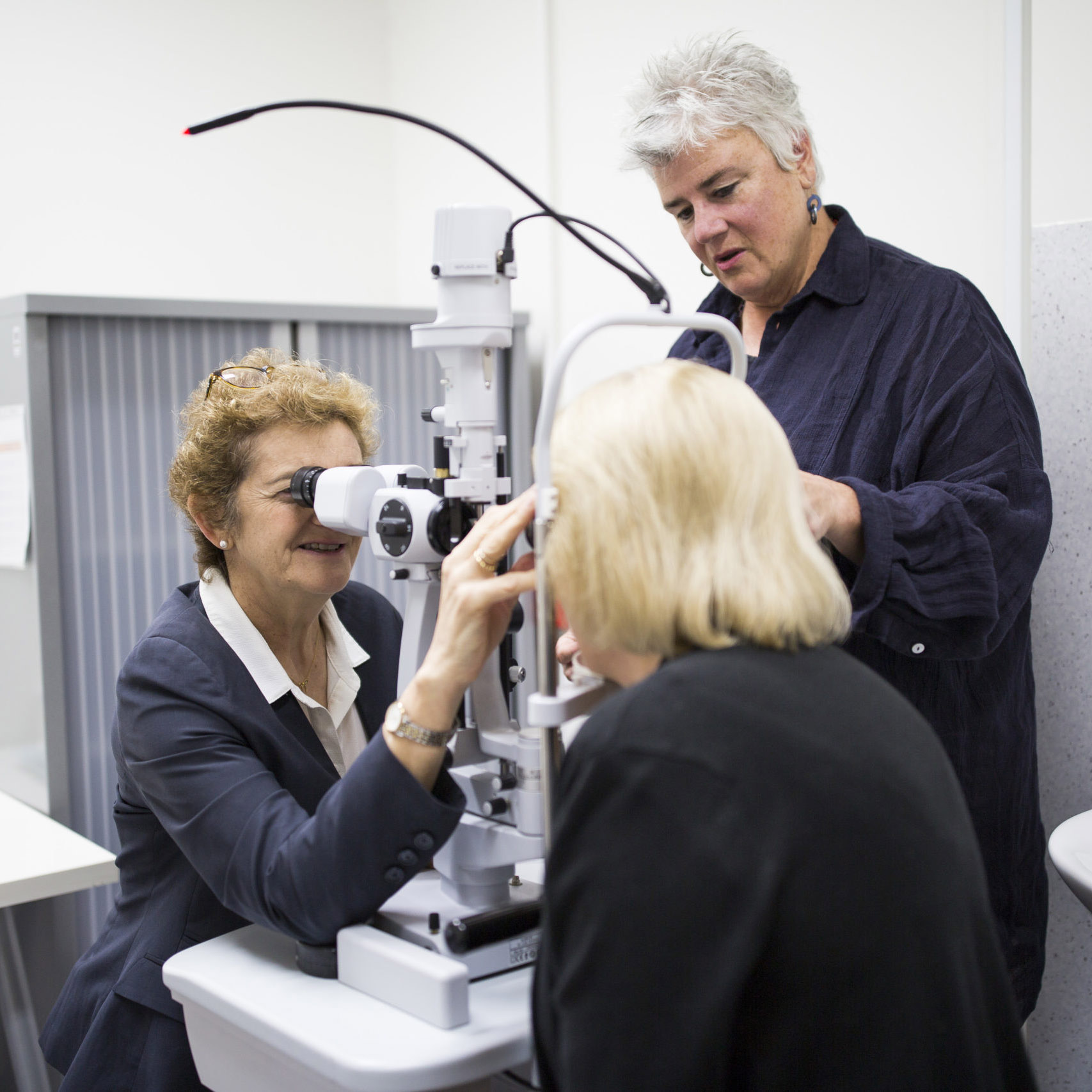Stories
Macular milestone
Our Macular Research Unit has celebrated its 25th anniversary – and a quarter-century of advances in the diagnosis and treatment of age-related macular degeneration.
In 1997, age-related macular degeneration (AMD) was a poorly understood condition, with little hope of saving the sight of people diagnosed with the disease.
But over the past 25 years, our understanding has improved significantly, and treatments to slow the progression of wet AMD are now widely used.
Just recently in the United States, the world’s first treatment for dry AMD was approved – with more options on the horizon. Professor Robyn Guymer AM and the Macular Research Unit have played a critical role in the global research effort that has led to many advances in the treatment of AMD.
In 2022, the team celebrated its silver anniversary, their achievements along the way, and looked forward to further progress.
To commemorate this important milestone, two long-serving team members, research nurse Melinda Cain and Associate Professor Chi Luu, shared their memories of working in the Macular Research Unit.
Laying the foundations
Professor Guymer established CERA’s Macular Research Unit in 1997 following a fellowship at Moorfields Eye Hospital in London.
AMD affects the macula – the central part of the retina located at the back of the eye – and results in blurred central vision. At the time, AMD was only recently identified as an inherited disease, and the Macular Research Unit’s primary aim was to find the genes associated with the condition to learn more about how it could potentially be treated.
Research nurse Melinda Cain, who has been a member of the unit from the very first day, joined Professor Guymer to identify people living with the condition across Victoria and interstate.
Visiting families
“We would meet up once a week, drive in a station wagon for sometimes up to three hours to see family members with the condition,” says Melinda.
“The people we visited in their homes were always welcoming – we performed a quick vision test, a small genetic blood sample and a photo of the back of the eye using a portable fundus camera Robyn received a small grant for.”
The years undertaking this research have contributed critical data that helped point towards the mechanisms that cause retinal disease.
It also established the Macular Research Unit as a group that could contribute well-classified clinical cases for genetic analysis.
“Our team grew, and we focused on clinical trials,” says Melinda.
“Our team has been involved in multiple clinical trials that have led to the approval of several new drugs that are now used to treat this debilitating condition.”
Melinda says being part of the transformation of CERA has been amazing.
“In the early days we conducted large epidemiological studies involving questionnaires and took retinal photos to work out the prevalence of eye disease in the community,” she says.
“Then we moved to a basic science focus employing different types of scientists, all experts in their fields, working alongside us to advance our understanding of the biological mechanisms involved in eye disease.
“An exciting multi-disciplinary team has evolved at CERA, and I am pleased to have been a part of it working with Robyn and the team.”

Advancing technology
Throughout the unit’s existence, improvements in technology have transformed the kind of research that can be undertaken.
Associate Professor Chi Luu, Deputy Head of Macular Research, first started with Professor Guymer’s interventional laser study in the late 1990s as a PhD student.
He later returned to join the unit and work on the bionic eye project, as well as to conduct studies on visual function in AMD.
“In the last 20 years, we have seen development of better imaging tools that let us see very fine structures in the retina,” says Associate Professor Luu.
“That is where we can learn more about the structural changes in the eye.”
Improved imaging has underpinned several of the Macular Research Unit’s achievements.
As part of his PhD, Associate Professor Zhichao Wu – now Head of CERA’s Clinical Biomarkers Research Unit – identified the specific changes that could be seen as part of cell death using an imaging technique called Optical Coherence Tomography (OCT).
The team has also conducted trials for AMD treatments, including intravitreal injections into the eye and laser treatments.
Identifying risk factors, disease progression and treatments for early-stage AMD to prevent vision loss is central to CERA’s ongoing research.
The next steps are looking to improve how to preserve sight more effectively.
Synergy study
The Synergy High Risk AMD Study – a joint project led by CERA, the University of Melbourne and WEHI – is investigating genes and risk factors that contribute to some people having a particularly high chance of losing their vision.
There is also ongoing work towards investigating if laser technologies have the capability to slow disease progression.
“More importantly, there’s still nothing out there to stop progression from early asymptomatic stages to vision-threatening late AMD,” says Associate Professor Luu.
“The research into new treatments for early stages of AMD to prevent vision loss is particularly exciting.”
This article first appeared in See the future: Annual Review 2022.
